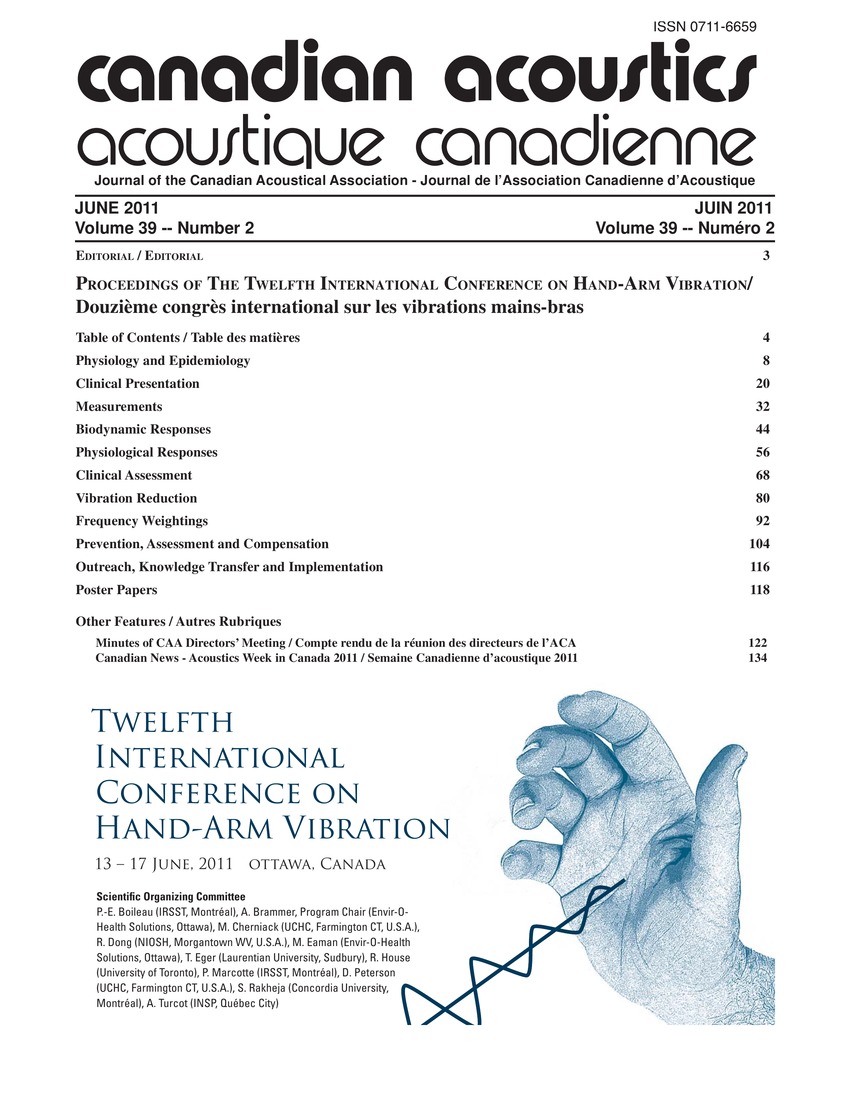New standard criteria for cold provocation test with hand immersion for cases of HAVS in Japan
Keywords:
Acoustic surface wave devices, Control groups, Evaluation system, Finger skin, Logical combination, Lower average, National standard, Sensitivity and specificity, Vibrating tools, Vibration white fingersAbstract
A national standard for cold-water provocation tests based on an analysis of Japanese multi-institutional data was established. Data was collected from 872 individuals who underwent cold-water provocation testing at 7 institutions. Three indices were used for the analysis of finger skin temperature and the scores from the 3 indices were incorporated into an evaluation system that logically combined them. The results show that the most frequently used vibrating tools were chain saws (34%) and chipping hammer (25%) in the patient group. When compared to the control group, members of the patient group with vibration white finger (VWF) had significantly lower average values for the 3 indices. The sensitivity and specificity of the scored method are found to be 7 1.7% and 72.0%, while the logical combination evaluation system yielded sensitivity and specificity values of 70.6% and 74.0%.Additional Files
Published
How to Cite
Issue
Section
License
Author Licensing Addendum
This Licensing Addendum ("Addendum") is entered into between the undersigned Author(s) and Canadian Acoustics journal published by the Canadian Acoustical Association (hereinafter referred to as the "Publisher"). The Author(s) and the Publisher agree as follows:
-
Retained Rights: The Author(s) retain(s) the following rights:
- The right to reproduce, distribute, and publicly display the Work on the Author's personal website or the website of the Author's institution.
- The right to use the Work in the Author's teaching activities and presentations.
- The right to include the Work in a compilation for the Author's personal use, not for sale.
-
Grant of License: The Author(s) grant(s) to the Publisher a worldwide exclusive license to publish, reproduce, distribute, and display the Work in Canadian Acoustics and any other formats and media deemed appropriate by the Publisher.
-
Attribution: The Publisher agrees to include proper attribution to the Author(s) in all publications and reproductions of the Work.
-
No Conflict: This Addendum is intended to be in harmony with, and not in conflict with, the terms and conditions of the original agreement entered into between the Author(s) and the Publisher.
-
Copyright Clause: Copyright on articles is held by the Author(s). The corresponding Author has the right to grant on behalf of all Authors and does grant on behalf of all Authors, a worldwide exclusive license to the Publisher and its licensees in perpetuity, in all forms, formats, and media (whether known now or created in the future), including but not limited to the rights to publish, reproduce, distribute, display, store, translate, create adaptations, reprints, include within collections, and create summaries, extracts, and/or abstracts of the Contribution.


